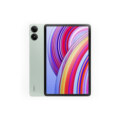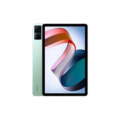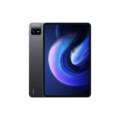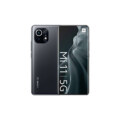Xiaomi Redmi Note 13 Pro+




Specs
General
| Device Type | Xiaomi Redmi Phone |
| Announced | 21 September, 2023 |
| Released | 21 September, 2023 |
| Status | Available |
Design
| Dimensions | 161.4 x 74.2 x 8.9 mm |
| Weight | 199 g |
| Protection | Glass front (Gorilla Glass Victus), glass back or silicone polymer back (eco leather) |
| Colors | Midnight Black (Fushion Black), Moonlight White (Fushion White), Aurora Purple, Fushion Purple, Camo Green |
Display
| Refresh Rate | 120 Hz |
| Display Type Display Technology => A number of display technologies and types used in mobile phones => TFT (Thin Film Transistor), IPS (In-Place Switching), OLED (Organic Light Emitting Diode), AMOLED (Active-Matrix Organic Light-Emitting Diode), Super AMOLED (an even advanced version of AMOLED), Resistive Touchscreen (Resistive touchscreens contain two layer of conductive material with a very small gap between them which acts as a resistance), Capacitive Touchsceen (Capacitive touchscreen technology consists of a layer of glass coated with a transparent conductor) | AMOLED |
| Size | 6.67 inches |
| Resolution | 1080 x 2400 pixels |
| Display Colors Display Colors is refers to the number of different shades of colors that the screen is capable of displaying => 64K colors, 256K colors and 16 million colors, Obviously 16M is highest available range of colors and better than others. | 68B |
| Pixel Density Pixel Density (PPI) is refers to the concentration of pixels on a particular display, measured in pixels per inch (ppi). Pixel density is calculated by dividing the diagonal pixel resolution of a display by its diagonal size, higher pixel density better display quality. | ~ 446 ppi |
| Touch Screen | Capacitive Touchscreen, Multitouch |
| Display Protection Display Protection => Gorilla Glass is a special alkali-aluminosilicate glass shield with exceptional damage resistance that helps protect mobile displays from scratches, drops, and bumps of everyday use, It is always better to go for a smartphone with Gorilla Glass for that added protection and peace of mind. | Corning Gorilla Glass Victus |
| Features | Dolby Vision, HDR10+, 1800 nits (peak) |
| Secondary Display | No |
Camera
| Front Camera | 16 MP, f/2.4, (wide) |
| Camera Setup | Triple |
| Main Camera Camera is able to capture photographs and usually videos, The most important characteristics of a camera are the resolution (measured in megapixels), lens focus type (fixed or automatic), higher megapixel cameras are known to capture higher quality photos, but not always a good measurement of the photos quality. |
200 MP, f/1.7, 23mm (wide) 8 MP, f/2.2, 120˚ (ultrawide) 2 MP, f/2.4, (macro) |
| Video | 4K@24/30fps, 1080p@30/60/120fps, gyro-EIS |
| Camera Features | Geo-tagging, Phase detection, touch focus, HDR, Panorama |
| Flash Flash Light => There is commonly two types of flash lights are used in camera mobile phones, LED Flash (LED flash offers lower power consumption with drive circuitry that takes up very little room, LEDs can be strobed faster than any other light source), Xenon Flash (xenon flash produces an extremely intense full-spectrum white light for a very short duration) | Dual-LED dual-tone flash |
Hardware
| Operating System OS => Every computer system run on a base software called Operating System (OS). Operating System controls all basic operations of the computer (such as smartphone, PDAs, tablet computers and other handheld devices). The Operating System allows the user to install and run third party applications (apps), apps are used to add new functionality to the device. | Android 13 |
| Chipset Chipset is a group of integrated circuits designed to perform one or a more dedicated functions, often with real time computing constraints, Popular smartphones are equipped with more advanced embedded chipsets that can do many different tasks depending on their programming. | Mediatek Dimensity 7200 Ultra |
| CPU CPU (Central Processing Unit) mostly known as processors, CPU processes instructions in order to carry out certain functions that make your device operate properly. Processors are often described as the brain of computers, smartphones and tablets, Smartphones and tablets rely on processors to carry out their every task, Processors are an incredibly important factor in selecting any type of computing device, including your smartphone. | Octa-core (2 x 2.8 GHz Cortex-A715 + 6 x 2.0 GHz Cortex-A510) |
| Architecture | 64 bit |
| Fabrication | 4 nm |
| GPU GPU (Graphics Processing Unit) is a single-chip processor designed to rapidly manipulate and alter memory to accelerate the creation of images in a frame buffer intended for output to a display, This includes things such as lighting effects, object transformations, and 3D motion. | Mali-G610 MC4 |
| RAM (Memory) RAM (Random Access Memory) is a type of computer memory that can be accessed randomly, any byte of memory can be accessed without touching the preceding bytes that allows information to be stored and accessed quickly from random locations. RAM is the most common type of memory found in computer systems, smartphones, tablets and other electronic devices. | 12 GB |
| Internal Storage Internal Storage is a data storage space (flash memory) mostly used in smartphones, tablets and other electronic devices where operating system, apps, music, photos, videos, files and other user data Is stored. | 512 GB |
| Card Slot Memory Card Slot is a special slot for inserting a memory card. Memory cards allow you to expand the phone's built-in memory, A memory card (sometimes called a flash memory card or a storage card) is a small storage medium used to store data such as text, pictures, audio, and video, for use on small, portable or remote computing devices such as mobile phones, mp3 players, digital cameras. | |
| Sensors Sensors are electronic components that detects and responds to some type of input from the physical environment. The specific input could be light, heat, motion, moisture, pressure and location, The output is generally a signal that is converted to use in computing systems, a location sensor, such as a GPS receiver is able to detect current location of your electronic device. | Accelerometer, Compass, Fingerprint (under display, optical), Gyro, Proximity |
Network
| SIM TYPE SIM (Subscriber Identity Module) is a small card that contains mobile network subscriber's account information. This allows the phone using the card to attach to a mobile network. The SIM card is most commonly associated with GSM and UMTS mobile networks. Moving a SIM card from one phone to another allows a subscriber to switch mobile phones without having to contact their mobile network carrier. SIM cards can also be used by a phone to store limited amounts of data, such as phone numbers and text messages. | Nano SIM |
| SIM Technology | Nano-SIM, eSIM or Dual SIM (Nano-SIM, dual stand-by) |
| 2G Network | GSM 850 / 900 / 1800 / 1900 |
| 3G Network | HSDPA 850 / 900 / 1700(AWS) / 1900 / 2100 |
| 4G Network | LTE band 1(2100), 3(1800), 5(850), 7(2600), 8(900), 40(2300), 41(2500) |
| 5G Network | SA/NSA |
Multimedia
| FM Radio | |
| Stereo Speakers | YES |
| Loudspeaker | YES |
| Audio Jack | NO |
| Audio Features | 24-bit/192kHz Hi-Res & Hi-Res wireless audio |
Connectivity
| Wi-fi Wi-Fi is a popular wireless networking technology using radio waves to provide high-speed network connections that allows devices to communicate without cords or cables, Wi-Fi is increasingly becoming the preferred mode of internet connectivity all over the world. | Wi-Fi 802.11 a/b/g/n/ac/6, dual-band, Wi-Fi Direct |
| Bluetooth Bluetooth is a wireless communications technology for exchanging data between mobile phones, headsets, computers and other network devices over short distances without wires, Bluetooth technology was primarily designed to support simple wireless networking of personal consumer devices. | v5.3 with A2DP, LE |
| GPS GPS The Global Positioning System is a satellite-based radio navigation system, GPS permits users to determine their position, velocity and the time 24 hours a day, in all weather, anywhere in the world, In order to locate your position, your device or GPS receiver must have a clear view of the sky. | + A-GPS support & Glonass, BDS, GALILEO, QZSS |
| USB | USB Type-C 2.0, OTG |
| EDGE EDGE (Enhanced Data GSM Environment) is a wireless network technology generally considered the next step in the 2G network offers data transfer rates up to four times faster than ordinary GSM networks, Generally, EDGE is used for the purpose of wireless data transfer, such as sharing pictures and videos or browsing the Internet via a mobile phone connection. | |
| GPRS GPRS (General Packet Radio Service) is a packet oriented mobile data service on the 2G and 3G cellular communication system's global system for mobile communications (GSM), Generally, GPRS is used for the purpose of wireless data transfer, such as sharing pictures and videos or browsing the Internet via a mobile phone connection. | |
| Speed | 3G (HSPA 42.2/5.76 Mbps), 4G LTE-A (CA), 5G Capable |
| Wi-fi Hotspot | |
| NFC NFC (Near field communication) is a set of standards for smartphones and similar devices to establish peer-to-peer radio communications with each other by touching them together or bringing them into proximity, usually no more than a few inches. |
Features
| Messaging | SMS(threaded view), MMS, Email, Push Mail, IM |
| Web Browser Web Browser => a web browser is a software application used to locate, retrieve and display content on the World Wide Web, including Web pages, images, video and other files, The primary function of a web browser is to render HTML, the code used to design or markup webpages. | HTML5 |
| Games | Built-in + Downloadable |
| Torch |
Battery
| Battery Type Battery Type => Cell phones run on various kinds of batteries depending on the manufacturer, phone size or shape and features. There are basically four types of cell phone batteries => Lithium Polymer, Lithium Ion, Nickel Metal Hydride and Nickel Cadmium. | Li-Ion (Lithium Ion) |
| Capacity Battery Capacity is a measure (typically in Amp-hr) of the charge stored by the battery, and is determined by the mass of active material contained in the battery. The battery capacity represents the maximum amount of energy that can be extracted from the battery under certain conditions. | 5000 mAh |
| Placement | Non-removable |
| Wireless Charging Wireless Charging (Inductive Charging) uses an electromagnetic field to transfer energy between two objects. This is usually done with a charging station. Energy is sent through an inductive coupling to an electrical device, which can then use that energy to charge batteries or run the device. | No |
| Extra |
Fast charging 120W wired PD3.0 100% in 19 min (advertised) |
Xiaomi Redmi Note 13 Pro+: Detailed Review
Introduction:
The Xiaomi Redmi Note 13 Pro+ is the latest addition to Xiaomi’s popular mid-range Note series. Launched in 2024, this device aims to offer premium features at a competitive price, with improvements in design, display, camera, and performance. The Redmi Note 13 Pro+ continues Xiaomi’s legacy of pushing boundaries in the mid-range segment, making it a compelling choice for users seeking flagship-level features without the high price tag. This review covers its design, display, performance, camera capabilities, battery life, software, and more, along with a summary of its pros and cons.
Specifications at a Glance
- Display: 6.67-inch AMOLED, FHD+ (2400 x 1080), 120Hz refresh rate
- Processor: MediaTek Dimensity 9200+ chipset
- RAM: 8GB/12GB
- Storage Options: 128GB, 256GB, 512GB
- Rear Cameras: 200 MP primary sensor, 8 MP ultra-wide, 2 MP macro
- Front Camera: 16 MP
- Battery: 5000 mAh with 120W fast charging
- Operating System: MIUI 15 based on Android 13
- Water and Dust Resistance: IP53 (splash resistance)
- Audio: Stereo speakers, no 3.5mm headphone jack
- Dimensions: 162.9 x 76 x 8.9 mm
- Weight: 204 grams
Design and Build Quality
- Aesthetics:
The Xiaomi Redmi Note 13 Pro+ sports a sleek and premium design with curved edges, providing a modern look and comfortable grip. The back is made of glass, and the camera module is well-integrated, giving it a flagship-like appearance. Available in various color options, including Blue, Black, and a special edition Green. - Durability:
The glass front and back are protected by Gorilla Glass 5, enhancing its resistance to scratches and minor drops. The device also carries an IP53 rating, making it splash-resistant but not fully waterproof. - Ergonomics:
Despite its large size, the Redmi Note 13 Pro+ feels comfortable to hold, with well-balanced weight distribution. The curved back ensures it sits well in the hand, though the phone might feel a bit heavy at 204 grams.
In summary, the Xiaomi Redmi Note 13 Pro+ delivers a premium design and solid build quality that rivals higher-end devices, while maintaining durability and comfort.
Display
- Specifications:
- Size: 6.67-inch AMOLED Display
- Resolution: 2400 x 1080 pixels (FHD+)
- Panel Type: AMOLED
- Refresh Rate: 120Hz
- Brightness: 1200 nits (peak)
- Color Gamut: 100% DCI-P3
- HDR Support: HDR10+
- Performance:
The 6.67-inch AMOLED display on the Redmi Note 13 Pro+ is vibrant and punchy, delivering excellent contrast and deep blacks. The 120Hz refresh rate ensures smooth scrolling and animations, enhancing the overall user experience. With HDR10+ support and a peak brightness of 1200 nits, the display performs well in bright sunlight, making it suitable for both indoor and outdoor usage. - True-to-Life Colors:
The wide color gamut (100% DCI-P3) ensures vivid and accurate color reproduction, making it perfect for watching movies, gaming, and browsing.
In conclusion, the Xiaomi Redmi Note 13 Pro+ offers a stunning display that competes with more expensive devices, providing a visually immersive experience for content consumption.
Performance
- Hardware:
- Processor: MediaTek Dimensity 9200+ chipset
- RAM: 8GB or 12GB LPDDR5X
- Storage: UFS 3.1 (128GB, 256GB, or 512GB)
- Performance Evaluation:
The Redmi Note 13 Pro+ is powered by the MediaTek Dimensity 9200+, which delivers flagship-level performance. Multitasking, gaming, and everyday tasks are handled with ease. Paired with up to 12GB of RAM, the phone ensures smooth performance, even when running intensive apps or games. The phone excels in gaming with high graphics settings, thanks to its powerful GPU. - Benchmark Scores:
The device scores impressively on benchmark platforms:- Geekbench 6: 1,425 (single-core) and 4,990 (multi-core)
- Antutu: Over 950,000 points, placing it among the top performers in the mid-range category.
Overall, the Xiaomi Redmi Note 13 Pro+ delivers excellent performance, making it a perfect choice for power users and gamers.
Camera
The Xiaomi Redmi Note 13 Pro+ features an impressive triple-camera system, designed to cater to photography enthusiasts.
- Rear Cameras:
- Primary Lens: 200 MP, f/1.8, OIS (Optical Image Stabilization)
- Ultra-Wide Lens: 8 MP, f/2.2, 120° field of view
- Macro Lens: 2 MP, f/2.4
- Front Camera:
- 16 MP, f/2.5
- Camera Performance:
- Daylight Photography:
The 200 MP primary camera captures stunningly detailed and vibrant photos in well-lit conditions. Images are crisp, with excellent dynamic range, making it one of the standout features of this phone. The ultra-wide camera adds versatility, allowing you to capture broader scenes with minimal distortion. - Low-Light Photography:
The Redmi Note 13 Pro+ excels in low-light conditions thanks to its large sensor and Night Mode, producing bright, sharp images with minimal noise. The OIS in the primary lens aids in stabilizing shots, reducing blurriness in handheld photos. - Macro Photography:
While the 2 MP macro lens provides a decent close-up experience, it is more of a novelty feature and doesn’t perform as well as the main camera.
- Daylight Photography:
- Video Recording:
The device supports 4K video recording at 30fps and 1080p at 60fps. Video quality is solid, with good color accuracy and stabilization.
In conclusion, the Xiaomi Redmi Note 13 Pro+ delivers an impressive camera experience, especially for its price range, though the macro lens may feel underwhelming compared to the other two.
Battery Life
- Specifications:
- Battery Capacity: 5000 mAh
- Charging: 120W fast charging (50% in 10 minutes)
- Performance:
The large 5000 mAh battery comfortably lasts a full day of heavy usage. With moderate use, it can stretch to nearly two days. The 120W fast charging is a standout feature, allowing you to charge the device from 0 to 100% in just around 20 minutes.
In summary, the Xiaomi Redmi Note 13 Pro+ offers impressive battery life and rapid charging, ensuring you never run out of power during the day.
Software
- Operating System: MIUI 15 based on Android 13
- User Experience:
MIUI 15 brings a polished and feature-rich experience. It includes a variety of customization options, system optimizations, and useful tools like a built-in screen recorder, dark mode, and improved gesture navigation. However, MIUI does come with some pre-installed apps (bloatware), which might be bothersome for some users. - Software Support:
The Redmi Note 13 Pro+ is expected to receive several years of software updates, ensuring its longevity.
Pros & Cons
Pros:
- Outstanding Performance: Powered by the Dimensity 9200+ chipset, the phone handles gaming, multitasking, and intensive apps with ease.
- Impressive Camera Setup: The 200 MP camera delivers excellent photo quality, particularly in daylight, while the ultra-wide adds versatility.
- Bright and Smooth Display: The 120Hz AMOLED display is vibrant, making it great for media consumption and gaming.
- Fast Charging: 120W fast charging is a huge advantage, allowing the phone to charge fully in around 20 minutes.
- Solid Battery Life: The 5000 mAh battery ensures all-day usage, even with heavy activity.
Cons:
- Bloatware: MIUI comes with pre-installed apps that may clutter the experience.
- Macro Camera: The 2 MP macro lens feels underwhelming compared to the rest of the camera setup.
- No IP68 Rating: While the phone is splash-resistant (IP53), it lacks full water and dust resistance.
- No 3.5mm Headphone Jack: Like many modern smartphones, the headphone jack is missing, which may be inconvenient for some users.
Conclusion
The Xiaomi Redmi Note 13 Pro+ offers a fantastic combination of performance, camera quality, and battery life, all packed into a stylish design. Its powerful chipset, vibrant display, and flagship-level fast charging make it a strong contender in the mid-range market. While some minor drawbacks like bloatware and the lack of a telephoto lens exist, the overall value and features make this phone an exc
Review
Disclaimer Note
All prices in Pakistan is updated daily from the price list provided by local shops and dealers but we can not guarantee that the information / price on this page is 100% correct (Human error is possible), always visit your local shop for exact cell phone cost & rate.















